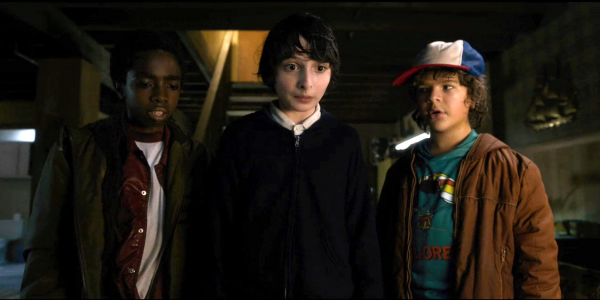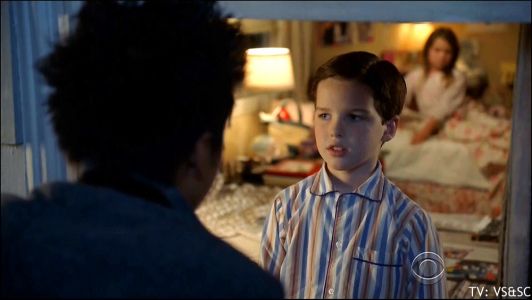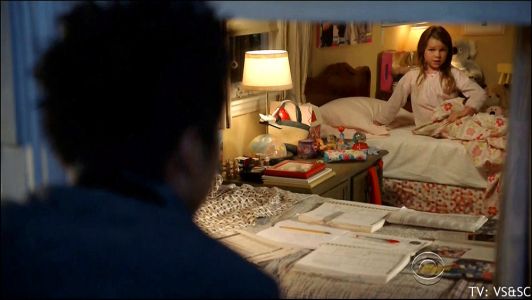Difference between revisions of "Style and the Camera (Discussion)"
From Screenpedia
Jump to navigationJump to search| Line 20: | Line 20: | ||
==DP exercise== | ==DP exercise== | ||
| − | If you were a DP reshooting shots from ''Stranger Things'' and '' | + | If you were a DP reshooting shots from ''Stranger Things'' and ''Young Sheldon'' (see screenshots below), how might you change those shots' cinematographic aspects? |
#''Describe'' a cinematographic element's use in the moment shown in these two screenshots. I.e., start by describing the screenshot's depth of field ('''Group 1'''), focal length ('''Group 2'''), aspect ratio ('''Group 3'''), and framing/height ('''Group 4'''). | #''Describe'' a cinematographic element's use in the moment shown in these two screenshots. I.e., start by describing the screenshot's depth of field ('''Group 1'''), focal length ('''Group 2'''), aspect ratio ('''Group 3'''), and framing/height ('''Group 4'''). | ||
#Imagine ''changing'' that element's use in the moment captured in the screenshots. | #Imagine ''changing'' that element's use in the moment captured in the screenshots. | ||
| − | #*'''Groups 3''': these screenshots use | + | #*'''Groups 3''': these screenshots use the 16x9 (1.78x1) aspect ratio. What if the DP choose to shoot these shows in 2.35x1 (anamorphic) or 1.33x1? How would that change the impact of the shot? |
#*'''Group 2''': how might a zoom lens (a variable focal-length lens) be used in this shot? | #*'''Group 2''': how might a zoom lens (a variable focal-length lens) be used in this shot? | ||
#How would such a change affect the scene's impact or the viewer's understanding of it? | #How would such a change affect the scene's impact or the viewer's understanding of it? | ||
<gallery mode="packed" heights=200px> | <gallery mode="packed" heights=200px> | ||
| − | File:StrangerThingsS01E02qq00 00 28qq00005.png|alt= | + | File:StrangerThingsS01E02qq00 00 28qq00005.png|alt=Screenshot from ''Stranger Things''.|Screenshot from ''Stranger Things''. View clip (on Blackboard, starting at 14 seconds). |
| − | File: | + | File:Youngsheldon20171123lqq00 15 16qq00011.jpg|alt=Screenshot from ''Young Sheldon''.|Screenshot from a ''Young Sheldon'' shot (on Blackboard, starting at 37 seconds). |
| + | File:Youngsheldon20171123lqq00 15 19qq00014.jpg|alt=Screenshot from ''Young Sheldon''.|Screenshot from ''Young Sheldon'', shot from above continues. | ||
</gallery> | </gallery> | ||
Revision as of 19:42, 18 September 2020
Review topics from Television
Group 1: Depth of field
- Explain what depth of field is -- using the textbook illustrations.
- What is the difference between deep focus and deep space (as in mise-en-scene) -- using the textbook illustrations?
Group 2: Focal length
- Explain what focal length is -- using the textbook illustrations.
- How does a zoom in/out look different from a track in/out?
- How does the Vertigo effect illustrate the impact of focal length on the illusion of depth in an image? View clip (starting at 35 seconds)
Group 3: Aspect ratio
- Explain what aspect ratio is -- using the textbook illustrations.
- Also explain letterbox, pillarbox and pan-and-scan.
Group 4: Framing, height, and movement
- Explain the significance of camera framing, height, and movement -- using the textbook illustrations.
- When might movement be used that does not follow a character?
- How is a Steadicam shot different from a handheld shot?
- See Steadicam examples from ER: behind-the-scenes and the resulting shot.
DP exercise
If you were a DP reshooting shots from Stranger Things and Young Sheldon (see screenshots below), how might you change those shots' cinematographic aspects?
- Describe a cinematographic element's use in the moment shown in these two screenshots. I.e., start by describing the screenshot's depth of field (Group 1), focal length (Group 2), aspect ratio (Group 3), and framing/height (Group 4).
- Imagine changing that element's use in the moment captured in the screenshots.
- Groups 3: these screenshots use the 16x9 (1.78x1) aspect ratio. What if the DP choose to shoot these shows in 2.35x1 (anamorphic) or 1.33x1? How would that change the impact of the shot?
- Group 2: how might a zoom lens (a variable focal-length lens) be used in this shot?
- How would such a change affect the scene's impact or the viewer's understanding of it?
Bibliography
- Butler, Jeremy G. Television: Visual Storytelling and Screen Culture. New York: Routledge, 2018.
External links
- Illustrations from Television chapter 9.
- New Girl clip
- Northern Exposure clip (on Blackboard)
- Hitchcock's Vertigo effect — also on YouTube
- Vertigo effect in Jaws — also on YouTube


